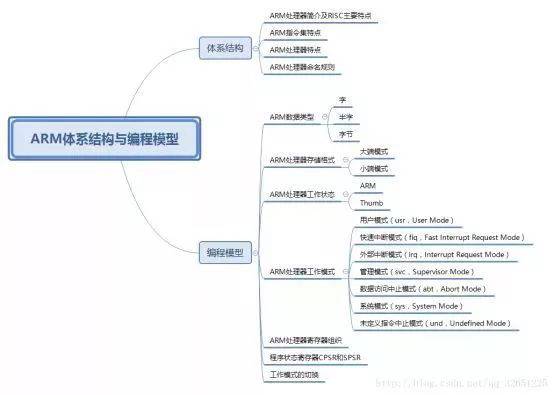ARM processor introduction and RISC features

Introduction to the First ARM Processor and RISC Characteristics
The ARM processor is a 32-bit Reduced Instruction Set Computing (RISC) architecture, known for its efficiency, low power consumption, and wide application in embedded systems. Designed with simplicity in mind, it offers high performance while maintaining cost-effectiveness. The RISC philosophy focuses on reducing the number of instructions and making them uniform in length, which allows for faster execution and better optimization by compilers.
Key Features of RISC Design
1. Simplified Instruction Set: RISC architectures use a smaller set of instructions that are typically executed in one clock cycle. This makes programming more straightforward and improves execution speed.
2. Pipeline Architecture: With fixed-length instructions, RISC processors can easily implement pipeline operations, allowing multiple instructions to be processed simultaneously at different stages.
3. Abundance of General-Purpose Registers: RISC designs often include a large number of registers, reducing the need for frequent memory access and increasing processing speed. For example, an ARM processor may have up to 37 registers.
4. Load/Store Architecture: Only specific load and store instructions interact with memory, while arithmetic and logic operations work exclusively with registers. This design increases data transfer efficiency.
5. Simplified Addressing Modes: RISC reduces the complexity of addressing modes, which helps streamline instruction decoding and execution.
ARM Instruction Set Features
Although based on RISC principles, the ARM architecture has evolved to meet the needs of embedded systems with some unique features:
1. Variable Instruction Cycles: Some instructions, like multi-register loads or stores, may take varying numbers of cycles depending on the number of registers involved. This flexibility helps optimize performance when dealing with sequential memory accesses.
2. Barrel Shifter: A hardware component that allows data manipulation before being used in an instruction. This feature extends the functionality of many instructions, improving both performance and code density.
3. Thumb Instruction Set: A 16-bit version of the ARM instruction set, offering improved code density and reduced memory usage. It allows the processor to switch between 32-bit and 16-bit instruction sets as needed.
4. Conditional Execution: Instructions can be executed only under certain conditions, reducing the need for branch instructions and improving performance and code efficiency.
5. Enhanced Instructions: ARM includes specialized instructions for digital signal processing (DSP), such as fast multiply and saturation operations, allowing the processor to handle complex tasks without a separate DSP unit.
Key Features of the ARM Processor
1. Fixed 32-bit instruction length
2. Large register file (up to 37 registers)
3. Load/Store instructions for memory access
4. Multi-register Load/Store instructions
5. Conditional execution of instructions
6. Single-cycle execution of shift and ALU operations
7. Support for coprocessors and variants to extend capabilities
8. Thumb 16-bit instruction set for better code density
ARM Processor Naming Rules
Understanding the ARM Programming Model
In the ARM architecture, the basic units of data are defined as words, half-words, and bytes. A word is 32 bits, a half-word is 16 bits, and a byte is 8 bits. These definitions help standardize memory access and data handling across different applications.
Memory Storage Format
ARM processors treat memory as a linear sequence of bytes starting from address zero. They support a maximum address space of 4GB, using either big-endian or little-endian formats. In big-endian mode, the most significant byte is stored at the lowest address, while in little-endian mode, the least significant byte is stored first.
Working States
The ARM processor operates in two main states: ARM state, where 32-bit instructions are executed, and Thumb state, where 16-bit instructions are used. This dual-state capability enhances flexibility and efficiency in different computing environments.
Working Modes
ARM processors have several operating modes, including User Mode, Fast Interrupt Mode (FIQ), Interrupt Mode (IRQ), Supervisor Mode (SVC), Abort Mode, System Mode, and Undefined Mode. Most of these modes are privileged, allowing access to system resources, while User Mode is non-privileged and requires switching to a privileged mode to access hardware directly.
Register Organization
The ARM architecture includes 37 32-bit registers, divided into general-purpose registers and status registers. These include R0-R15, along with various mode-specific registers like R8_fiq-R14_fiq, R13_svc, R14_svc, and others. Each register serves a specific purpose, such as the Program Counter (PC), Link Register (LR), and Stack Pointer (SP).
Program Status Registers (CPSR and SPSR)
The CPSR (Current Program Status Register) holds flags that indicate the current state of the processor, such as the condition flags (N, Z, C, V), interrupt disable bits (I, F), and the current mode (M4-M0). The SPSR (Saved Program Status Register) is used to save the CPSR value when an exception occurs, allowing the processor to return to its previous state after handling the exception.
Switching Between Modes
Mode transitions occur through software interrupts (SWI), external interrupts (IRQ/FIQ), exceptions (Abort, Undefined), or direct mode changes. For example, executing a SWI instruction in User Mode switches the processor to Supervisor Mode, enabling access to system resources. Similarly, an external interrupt triggers a switch to IRQ or FIQ mode for fast response.
Automotive Electronics Packaging
Packages For Automotive Electronics,Integrated Drive Electronics,Automotive Seat Heaters,Automotive Electronic Packaging
Shaanxi Xinlong Metal Electro-mechanical Co., Ltd. , https://www.cnxlalloys.com